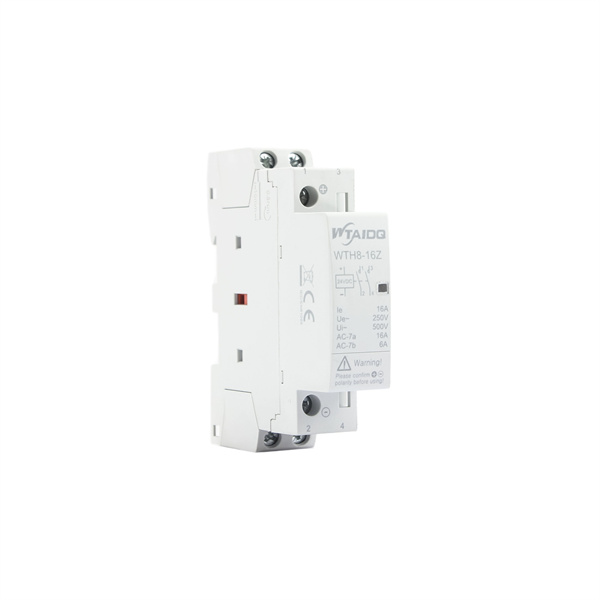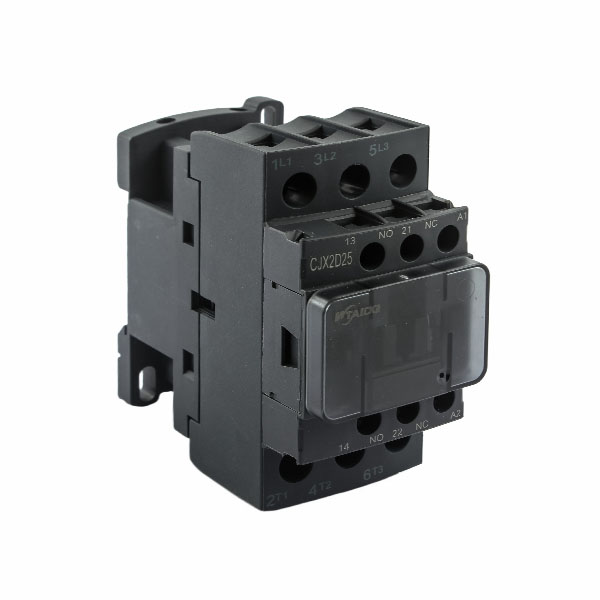Powering essential devices from robust motors to heating systems, AC contactors are the unsung workhorses of electrical control. But here’s the critical part: selecting the correct AC contactor is paramount. This isn’t merely about function; it’s a cornerstone of electrical safety, actively preventing dangerous arcing, costly equipment damage, and frustrating downtime – risks frequently highlighted by industry incident reports. We’re diving deeper than basics here, equipping you to confidently navigate AC contactor specifications for your 2025 projects and beyond, ensuring both safety and peak efficiency.
What is an AC Contactor and Why is Precision
Selection Vital?
So, what exactly is an AC contactor? At its core, an AC contactor leverages electromagnetism: an energized coil creates a magnetic field, pulling an armature to close power contacts and complete a circuit. De-energize it, and springs open the contacts. This simple cycle can repeat thousands of times an hour! That’s why precise AC contactor selection is absolutely vital. A mismatch here isn’t a small oversight; it can lead to rapid wear, inefficient operation, or even catastrophic system failure. Getting this right from the start is crucial for any serious electrical project.
Key Criteria for Choosing Your AC Contactor
Right, let’s lay out the blueprint for choosing your AC contactor. This isn’t random; it involves a systematic evaluation of several key technical parameters. Overlooking any of these for your AC contactor can lead to suboptimal performance or real safety risks. So, let’s break them down.
Assessing Load Capacity
Sizing your AC contactor right means understanding IEC Utilization Categories. Defined by the IEC 60947-4-1 standard, these categories (like AC-1 for resistive loads, AC-3 for motors) classify an AC contactor by the specific type of load it’s designed to switch. This isn’t just a minor detail; using an AC-1 rated AC contactor for a demanding motor application, for example, is a common but dangerous mistake that leads to premature failure and safety risks. Always select your AC contactor based on the correct application category first – it’s crucial for reliable operation.
Coil Voltage
Coil voltage is crucial for your AC contactor. It must precisely match your control circuit’s supply voltage – not necessarily the grid. An incorrect coil voltage for your AC contactor leads to failure, burnout, or chattering. Always verify this on the nameplate.
Number of Poles
The number of poles is vital for your AC contactor. Poles define how many power circuits it switches simultaneously. Typically, 1 or 2-pole AC contactors serve single-phase loads. Three-phase motors use the standard 3-pole AC contactor. 4-pole units suit specific needs like neutral switching. The wrong choice leads to control issues or safety hazards.
Auxiliary Contacts
Auxiliary contacts are the control intelligence of your AC contactor. These low-power Normally Open (NO) or Normally Closed (NC) switches handle crucial logic: status indication, interlocking multiple AC contactor units, or PLC feedback. They significantly enhance your AC contactor’s capabilities in complex control systems.
Switching Frequency & Lifespan
Think about your AC contactor’s lifespan; it has distinct mechanical and electrical endurance ratings. High switching frequency or tough loads significantly shorten electrical life. For demanding, high-cycle applications, always consult the AC contactor datasheet. Select robust units specifically designed for such duty to ensure long-term reliability.
Installation and Maintenance Gold
For your AC contactor, true ‘gold’ lies in proper installation and diligent maintenance. These practices are key to maximizing its life, ensuring reliability, and upholding a consistently safe operating environment. It’s about getting the most from your AC contactor.
Pre-Installation Safety and Checks
Setting the stage for your AC contactor? Safety is paramount: LOTO always! Verify nameplate details against project needs, inspect the AC contactor for damage, and ensure it’s clean. These pre-checks are absolutely vital for a safe and successful installation.
Mounting and Wiring
Mount your AC contactor securely, ensuring good ventilation. Use correctly sized wires, stripped properly. Crucially, tighten all terminals on your AC contactor to the manufacturer’s exact torque specifications – loose connections cause overheating. For 3-phase motors, verify phase sequence.
Routine Maintenance Wisdom
Proactive care keeps your AC contactor reliable. Regularly inspect for overheating, damage, or loose connections. Listen for unusual noises from the AC contactor. Promptly replace any AC contactor showing severe wear or damage to ensure continued safety and system integrity.
Troubleshooting Common AC Contactor Issues
Even a well-chosen and maintained AC contactor can occasionally act up. Don’t fret. We’re now diving into decoding common distress signals from your AC contactor, showing you how to systematically diagnose and address these issues effectively and safely.
Contactor Fails to Close
When your AC contactor won’t close, start by verifying correct control voltage at its coil terminals (A1, A2). No voltage, or an open coil (tested with power off)? Your AC contactor likely needs attention. Also, thoroughly inspect the control circuit for faults like loose wiring or blown fuses. A rare mechanical obstruction could also be the issue.
Noisy Operation / Continuous Humming or Chattering
A noisy AC contactor – humming or chattering – often signals low coil voltage. Debris in the magnet path can also cause this; vacuum it carefully. For an AC contactor with an AC coil, a broken internal shading coil is a likely culprit for loud humming. Ensure your AC contactor also has the correct coil type.
Contactor Overheating
An overheating AC contactor is a serious red flag. This often means it’s overloaded (undersized) or has loose power connections creating high resistance. Incorrect coil voltage or a hot environment can also push your AC contactor too far. Address this immediately; it’s a fire hazard and compromises your AC contactor’s integrity.
Main Contacts Welded Shut or Severely Pitted
Welded or heavily pitted contacts on your AC contactor indicate a severe issue. This often results from extreme overcurrents, or an AC contactor switching highly inductive loads beyond its AC-4 rating. Excessive jogging can also cause it. If your AC contactor’s contacts weld, the circuit can’t open – a dangerous situation demanding immediate replacement.
How to Safely Test an AC Contactor
Suspect your AC contactor is faulty? Testing can confirm this or point elsewhere. But let’s be absolutely clear: safety is paramount when testing any AC contactor. We’ll walk through a safe, step-by-step process using basic electrical test equipment. Always prioritize safety first.
Step 1: Safety First! Power Down and Isolate
Before touching your AC contactor, safety is paramount. Disconnect ALL power sources – main and control. Implement Lockout/Tagout (LOTO). Then, crucially, verify zero voltage on every terminal with your multimeter. No exceptions.
Step 2: Visual Inspection & Wire Labelling
With power safely off, visually inspect your AC contactor for any obvious damage or signs of burning. Before disconnecting any wires from the AC contactor, carefully label each one (L1, T1, A1, etc.) to ensure correct reconnection later.
Step 3: Coil Continuity and Resistance Test
Next, test your AC contactor’s coil. Using a multimeter on Ohms, check across terminals A1 and A2. A specific resistance means good; infinite (OL) indicates an open coil, near zero a shorted coil on your AC contactor.
Step 4: Main Contact Resistance Test (Power Contacts)
Now, test the main power contacts of your AC contactor. De-energized, they should read open (OL). Energized (safely!), check resistance across each pole. High resistance on your AC contactor indicates damaged contacts.
Step 5: Auxiliary Contact Test (If Applicable)
Finally, if your AC contactor has auxiliary contacts, test them. De-energized, Normally Open (NO) should read open (OL), Normally Closed (NC) near zero Ohms. Energize the AC contactor; these states should reverse. Any deviation means a faulty contact.
Conclusion
Choosing the right AC contactor, as we’ve explored, is far more than just matching basic current and voltage. It truly involves a deep dive into load type (IEC category), coil characteristics, the number of poles, auxiliary needs, and the anticipated operational demands on your AC contactor. By investing time to understand these parameters for your AC contactor, you’re directly investing in the safety, efficiency, and longevity of your electrical installations. Always consult manufacturer datasheets – they are your best friend in this process. For reliable and durable solutions, consider exploring options like Wutai’s CJX2 Series AC contactors.
Post time: May-14-2025

